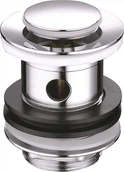Hey there! As a supplier of Cup Washers, I've been getting a lot of questions lately about how these nifty little devices behave under vibration. It's a pretty important topic, especially if you're using cup washers in an environment where there's a fair amount of shaking going on. So, let's dive right in and explore this together.
First off, what are cup washers? Well, they're those handy gadgets that are used to clean cups, glasses, and other small containers. You can find them in various settings, like restaurants, bars, and even in some home kitchens. There are different types too, such as the High Pressure Faucet Glass Washer and the Kitchen Glass Rinser. But for the purpose of this blog, we'll focus on the general Cup Washer.
When it comes to vibration, there are a few factors that can affect how a cup washer behaves. One of the main things is the source of the vibration. It could be from a nearby machine, like a blender or a dishwasher, or it could be due to the building's structure, like if it's on a busy street with lots of traffic.
Let's start by looking at the physical structure of a cup washer. Most cup washers are made up of a base, a housing, and some internal components like nozzles and valves. The base is usually designed to be stable, but if there's a lot of vibration, it can cause the cup washer to shift or move around. This can be a problem because it might not be properly aligned with the water supply or the drain, which can lead to leaks or poor cleaning performance.
The housing of the cup washer is also important. It's there to protect the internal components from damage and to keep the water inside. However, if the vibration is strong enough, it can cause the housing to crack or break. This not only looks bad but can also expose the internal parts to water and other contaminants, which can lead to malfunctions.
Now, let's talk about the internal components. The nozzles are responsible for spraying the water onto the cups to clean them. If the vibration causes the nozzles to move or become misaligned, the water spray pattern can be affected. Instead of a nice, even spray, you might get a lopsided or uneven one, which means the cups won't be cleaned properly.
The valves are another crucial part. They control the flow of water into and out of the cup washer. Vibration can cause the valves to open or close at the wrong time, which can lead to water leaks or inconsistent water pressure. This can make the cup washer less efficient and more difficult to use.
But it's not all bad news. There are some things that can be done to minimize the effects of vibration on cup washers. One option is to use antivibration pads or mounts. These are rubber or foam pads that can be placed under the cup washer to absorb the vibration and reduce its impact. They're relatively inexpensive and easy to install, and they can make a big difference in how the cup washer performs.
Another thing is to make sure the cup washer is properly installed. This means using the right tools and following the manufacturer's instructions carefully. A properly installed cup washer is more likely to be stable and less affected by vibration.
Regular maintenance is also important. By checking the cup washer regularly for any signs of damage or wear, you can catch problems early and fix them before they become serious. This includes checking the nozzles, valves, and housing for any cracks or leaks, and making sure the base is still stable.
In some cases, it might be necessary to relocate the cup washer to a less vibratory area. If there's a machine nearby that's causing a lot of vibration, try moving the cup washer to a different spot in the kitchen or bar. This can reduce the amount of vibration it's exposed to and improve its performance.
Now, you might be wondering how all of this affects the cleaning performance of the cup washer. Well, as I mentioned earlier, if the vibration causes the nozzles to become misaligned or the valves to malfunction, the cleaning performance will be affected. The cups might not be cleaned as thoroughly, and there could be spots or residue left on them. This can be a big problem, especially in a professional setting where presentation is important.


But if you take the right steps to minimize the effects of vibration, you can still get good cleaning results. By using antivibration pads, maintaining the cup washer regularly, and making sure it's properly installed, you can keep your cup washer working well even in a vibratory environment.
As a supplier, I've seen firsthand how important it is to understand how cup washers behave under vibration. That's why we offer a range of cup washers that are designed to be as stable and durable as possible. We also provide support and advice to our customers on how to install and maintain their cup washers to get the best performance.
If you're in the market for a cup washer or if you're having problems with your existing one, don't hesitate to reach out. We're here to help you find the right solution for your needs. Whether you're a restaurant owner, a bar manager, or a home cook, we've got the expertise and the products to make your cup washing experience a breeze.
So, if you're interested in learning more about our cup washers or if you have any questions about how they behave under vibration, just get in touch. We'd love to have a chat with you and see how we can help you.
References
- Manufacturer's manuals for cup washers
- Industry research on the effects of vibration on small appliances
- Personal experience and observations as a cup washer supplier





